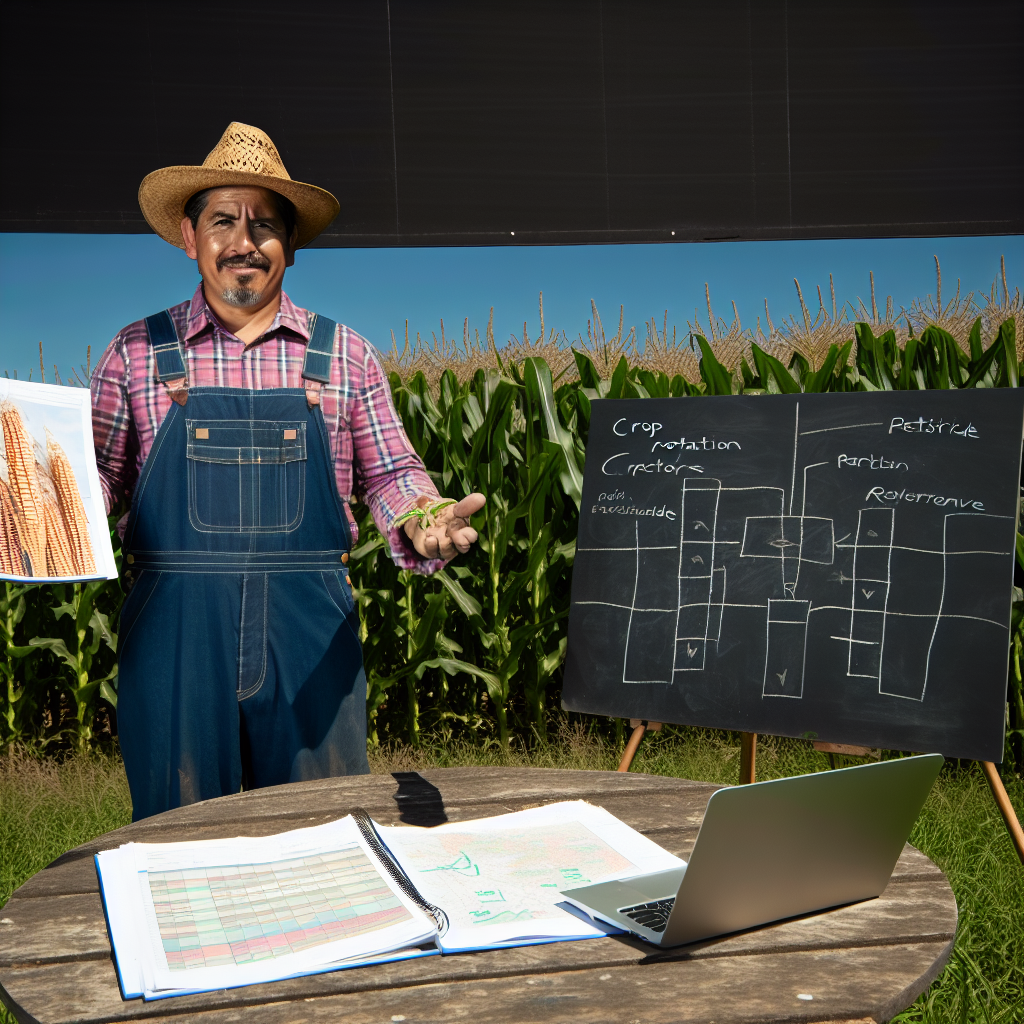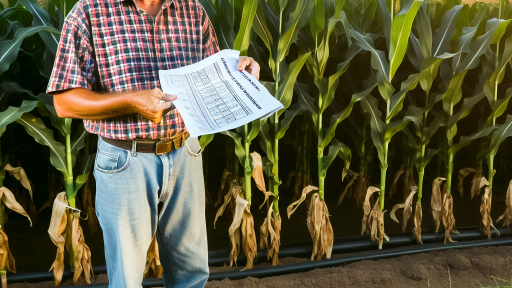Understanding the Importance of Food Safety in Agriculture
Significance of Food Safety
Food safety prevents foodborne illnesses and health hazards.
It protects consumers from contaminated products.
Moreover, it ensures the integrity of the food supply chain.
Impact on Public Health
Foodborne diseases affect millions globally each year.
Consequently, they put immense strain on healthcare systems.
Implementing food safety measures significantly reduces these risks.
Enhancing Farm Reputation
Establishing a robust food safety plan enhances your farm’s credibility.
Consumers prioritize safety and quality when purchasing food.
A commitment to food safety fosters trust with your clients.
Compliance with Regulations
Governments enforce food safety standards strictly.
Adhering to regulations prevents legal issues and penalties.
This compliance also promotes a culture of safety within the industry.
Economic Benefits
Investing in food safety can lead to higher profits.
It reduces waste from product recalls and contamination incidents.
Additionally, safe practices open new market opportunities.
Transform Your Agribusiness
Unlock your farm's potential with expert advice tailored to your needs. Get actionable steps that drive real results.
Get StartedIdentifying Potential Hazards on Your Farm
Understanding Types of Hazards
Start by recognizing the different types of hazards that can affect your farm.
Biological hazards include bacteria, viruses, and parasites.
Chemical hazards involve pesticides and fertilizers.
Physical hazards consist of foreign objects and equipment-related risks.
Assessing Biological Hazards
Conduct regular checks for signs of contamination.
Look for sources of pathogens, such as animal waste or contaminated water.
Train workers on safe handling practices to prevent outbreaks.
Evaluating Chemical Hazards
Review the use of pesticides and ensure proper storage protocols.
Implement measures to prevent chemical runoff into water sources.
Always follow label instructions and safety data sheets for chemicals.
Recognizing Physical Hazards
Inspect the farm for potential physical risks from machinery and tools.
Ensure all equipment is well-maintained to prevent malfunctions.
Establish clear safety protocols to protect workers from injuries.
Implementing Hazard Identification Strategies
Engage your team in identifying hazards through regular meetings.
Utilize checklists during farm inspections to ensure thoroughness.
Document all identified hazards to develop preventive measures.
Conducting a Risk Assessment for Your Farm Operations
Identifying Potential Hazards
Start by listing all possible hazards your farm may face.
Consider biological, chemical, and physical hazards.
For instance, pests and diseases pose a biological risk.
Chemical hazards may include pesticide residues.
Physical hazards can involve equipment malfunctions.
Evaluating Risks
Once you identify hazards, evaluate their potential impact.
Assess both the likelihood and consequences of each risk.
Utilize a risk matrix to categorize each hazard.
Showcase Your Farming Business
Publish your professional farming services profile on our blog for a one-time fee of $200 and reach a dedicated audience of farmers and agribusiness owners.
Publish Your ProfileThis matrix can help prioritize risks effectively.
Implementing Control Measures
After evaluating risks, implement control measures to minimize them.
Consider adopting good agricultural practices.
Regular training for staff can significantly enhance safety.
Furthermore, maintain equipment regularly to ensure proper function.
Monitoring and Reviewing
Continuous monitoring is essential for risk management.
Regularly review and update the risk assessment process.
Gather feedback from staff to identify new risks.
Adjust control measures based on evolving conditions.
This proactive approach helps maintain food safety.
Uncover the Details: The Benefits of Food Safety Standards for Farm-to-Table Supply Chains
Developing Standard Operating Procedures for Food Safety
Importance of Standard Operating Procedures
Standard operating procedures (SOPs) are vital for ensuring food safety on your farm.
They provide clear guidelines for staff to follow during food production.
This consistency minimizes the risk of contamination and mishandling.
Furthermore, SOPs promote accountability among employees.
Overall, they help maintain high-quality standards in your farm’s operations.
Identifying Food Safety Hazards
The first step in developing SOPs is identifying potential food safety hazards.
Consider biological, chemical, and physical hazards specific to your farm.
Biological hazards may include bacteria and viruses in crops.
Chemical hazards can arise from pesticides and fertilizers.
Physical hazards often involve foreign objects like stones or metal fragments.
Engage your team in brainstorming sessions to uncover all possible risks.
Creating SOP Documentation
Documenting SOPs is essential for effective implementation.
Start by outlining the processes involved in each specific operation.
Clearly define the steps employees must follow to reduce hazards.
Include necessary forms, checklists, or manuals to support compliance.
Make sure that these documents are easily accessible to all staff members.
Training Employees
Training your employees is crucial for the successful adoption of SOPs.
Schedule regular training sessions to familiarize staff with procedures.
Use hands-on demonstrations to ensure understanding of food safety practices.
Encourage team members to ask questions during training sessions.
Additionally, provide refresher courses to keep safety practices fresh in their minds.
Implementing SOPs on the Farm
Implement your developed SOPs through systematic application across your farm.
Assign responsibilities to specific team members to uphold food safety standards.
Monitor adherence to the protocols through regular inspections.
Use checklists to document compliance and track any issues that arise.
Address non-compliance promptly to restore food safety practices.
Reviewing and Updating SOPs
Regular reviews of SOPs are necessary to adapt to changing conditions.
Incorporate feedback from staff to improve existing procedures.
Stay informed about industry best practices and regulatory changes.
Showcase Your Farming Business
Publish your professional farming services profile on our blog for a one-time fee of $200 and reach a dedicated audience of farmers and agribusiness owners.
Publish Your ProfileSchedule annual reviews to ensure SOPs remain relevant and effective.
Make updates as needed and communicate these changes to all employees.
Learn More: Implementing Effective Food Safety Practices on Your Farm
Training Employees on Food Safety Practices and Protocols
Importance of Training
Proper training significantly reduces food safety risks on the farm.
Employees play a critical role in maintaining safety protocols.
Training promotes awareness and understanding of food safety standards.
Developing a Training Program
Create a comprehensive training program tailored to your specific needs.
Outline the essential topics to be covered during training sessions.
Include areas such as hygiene practices, equipment handling, and contamination prevention.
Utilize various instructional methods to make training engaging.
Incorporate hands-on demonstrations for practical learning experiences.
Regular Training Sessions
Schedule regular training sessions to reinforce knowledge.
Consider quarterly training updates to ensure consistency.
In addition, provide refresher courses to keep knowledge current.
Encourage employees to ask questions and share experiences during sessions.
Assessment and Feedback
Evaluate training effectiveness through assessments and quizzes.
Collect feedback from employees to improve future training sessions.
Adjust training materials based on participant input and performance.
Creating a Culture of Safety
Promote a culture of food safety throughout your farm.
Encourage open communication about safety concerns among staff.
Recognize and reward employees who demonstrate strong food safety practices.
Foster a shared commitment to maintaining high safety standards.
Find Out More: Agricultural Zoning: Best Practices for Farmers

Implementing Monitoring and Verification Procedures
Establishing Monitoring Protocols
Begin by identifying critical control points on your farm.
These points include areas where food safety hazards can occur.
Next, develop specific monitoring protocols for each control point.
Use observations, measurements, or tests to gather necessary data.
Additionally, document all monitoring activities meticulously.
Utilizing Technology for Monitoring
Leverage technology to streamline your monitoring process.
Consider using sensors to collect real-time data on environmental conditions.
Software applications can help organize and analyze the collected data.
Moreover, automated alerts can ensure timely responses to any issues.
This technology can significantly improve data accuracy and reliability.
Implementing Verification Procedures
Verification involves confirming that monitoring processes are effective.
Conduct regular audits of your monitoring records for accuracy.
Use third-party evaluations for unbiased reviews when possible.
This step helps identify any gaps in your monitoring protocols.
Furthermore, adjust your procedures based on audit findings.
Training Staff on Monitoring and Verification
Proper training is essential for staff involved in monitoring.
Provide comprehensive training on food safety hazards and procedures.
Showcase Your Farming Business
Publish your professional farming services profile on our blog for a one-time fee of $200 and reach a dedicated audience of farmers and agribusiness owners.
Publish Your ProfileEncourage staff to document their activities diligently.
Regularly update training materials to reflect best practices.
As a result, this keeps the team informed about food safety standards.
See Related Content: How Tariff Changes Can Affect Your Farming Business
Documenting Your Food Safety Plan and Maintaining Records
Importance of Documentation
Documentation is vital for effective food safety planning.
It helps you keep track of your practices and procedures.
Consistent records enable verification during audits.
You can identify areas needing improvement through documentation.
Components of a Food Safety Plan
Your food safety plan should consist of several key elements.
Begin with a description of your farm’s operations.
Next, outline potential hazards specific to your products.
Define critical control points relevant to those hazards.
Finally, explain your monitoring and corrective actions.
Recording Practices
Accurate record-keeping is essential for compliance.
Use logbooks to document daily operations and inspections.
Employ checklists for cleaning and sanitizing procedures.
Maintain records of employee training sessions and certifications.
Utilizing Technology for Record Maintenance
Technology can enhance your record-keeping efficiency.
Consider using digital platforms for easy access and storage.
Automated systems streamline data entry and management.
Cloud storage solutions provide secure access to documents.
Regular Review and Updates
Schedule regular reviews of your food safety plan.
Update records to reflect any changes in operations.
Involve your team in the review process to gather feedback.
This approach ensures everyone remains informed and compliant.
Training and Accountability
Train your staff on the importance of documentation.
Assign specific responsibilities for record-keeping tasks.
Encourage a culture of accountability within your team.
Regular training reinforces the significance of compliance.
Reviewing and Updating the Food Safety Plan Regularly
The Importance of Regular Review
Regular reviews of your food safety plan enhance its effectiveness.
They help identify potential weaknesses in your operations.
Furthermore, they ensure compliance with evolving regulations.
Regular updates reflect changes in your farming practices.
Establishing a Review Schedule
Create a routine schedule for reviewing your plan.
Consider conducting reviews bi-annually or annually.
Incorporate additional reviews after significant changes.
For example, new equipment or processes may necessitate updates.
Involving the Team in the Process
Engage your team in the review process.
Encouraging input from staff fosters a culture of safety.
Utilize their experiences to identify areas for improvement.
Showcase Your Farming Business
Publish your professional farming services profile on our blog for a one-time fee of $200 and reach a dedicated audience of farmers and agribusiness owners.
Publish Your ProfileRegular meetings can facilitate open discussions about food safety.
Documenting Changes and Updates
Keep thorough records of any changes made to the plan.
This documentation is vital for accountability and training.
Clear records help in tracking improvements over time.
Store these documents in an accessible location for future reference.
Training and Education
Implement ongoing training for your staff.
Regular training seminars can reinforce food safety knowledge.
Provide updates on any changes to the food safety plan.
This keeps your team informed and compliant with best practices.
Utilizing Feedback for Continuous Improvement
Solicit feedback from your team about the food safety plan.
Use this feedback to make necessary adjustments.
Addressing concerns can lead to a more robust safety culture.
Continuous improvement should be a core principle of your operations.




